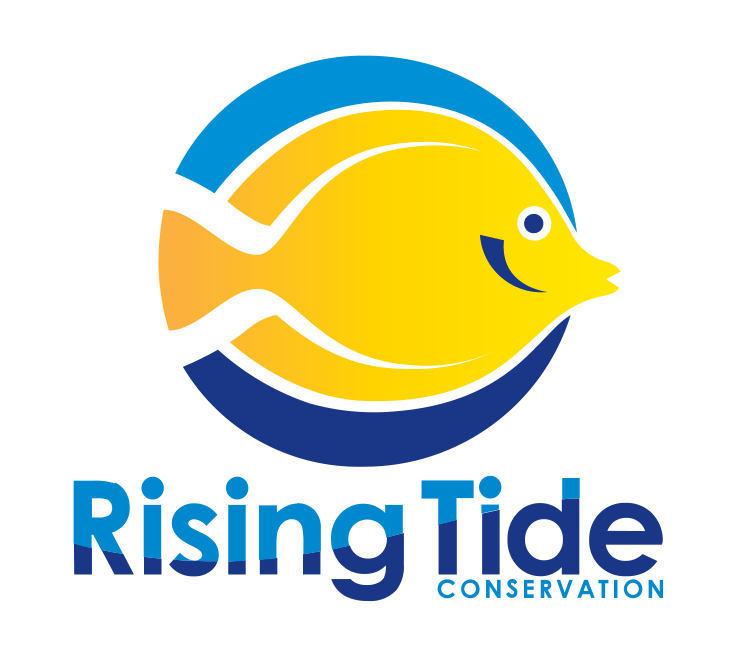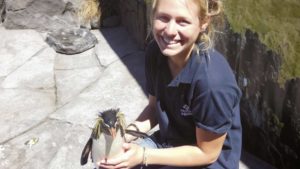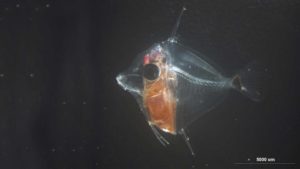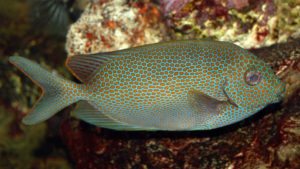15 day post hatch Pacific blue tang larva, measuring 3.6mm in length. Photo courtesy of Matthew L. Wittenrich
Personnel changes, although sometimes difficult, can also provide opportunities. With Matt’s departure comes a time for reassessment of past accomplishments and future goals both at the Tropical Aquaculture Lab and within Rising Tide. New partners are helping the cause in examining the larval rearing potential of marine ornamental fish species. Karen Brittain has recently joined Rising Tide from her facility in Hawaii and is working in conjunction with the University of Hawaii to help answer these questions. New partners in Florida and/or California are also being discussed. Past successes have helped lay the groundwork for future collaboration and accomplishments.
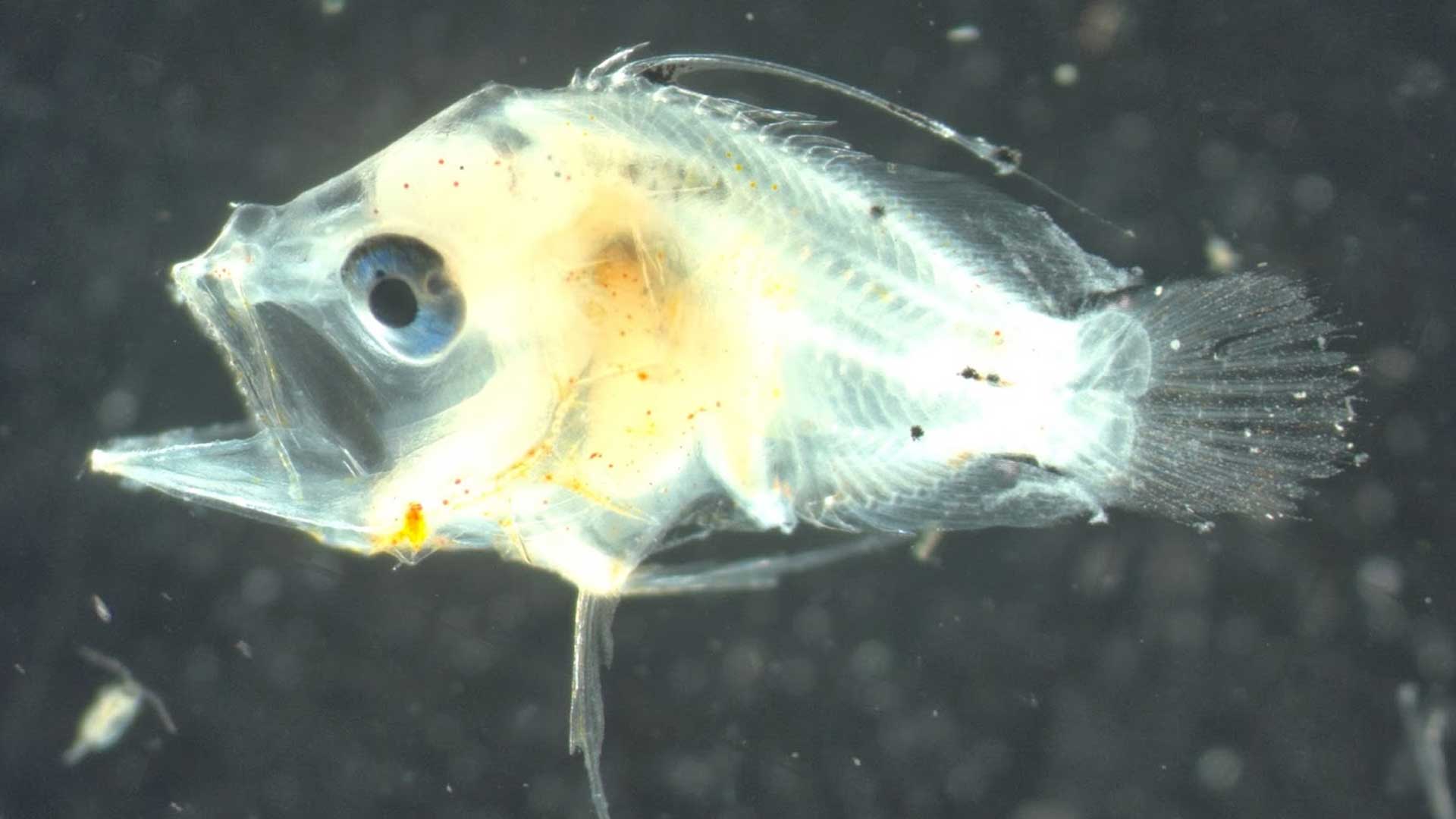
40 day post hatch Bartletts’ anthias larva, measuring 5.0mm in length. Photo courtesy of Matthew L. Wittenrich.
At the Tropical Aquaculture Lab, we are using this time to rebuild some old systems, examine current techniques, and revisit some old ideas. Our primary focus is on the production potential of both the Pacific blue tang and the yellow tang. Depending on the time of month, we get anywhere between 6000-10,000 blue tang eggs and 2000-4000 yellow tangs eggs each night. We are currently only able to grow either of them to 18-19 days post hatch (dph)with a major bottleneck identified at roughly 11 dph. We are currently examining past data and working with other researchers (OI’s Chad Callan and UF’s Cortney Ohs) to try and address these problems in tandem. We also have Bannerfish (both Heniochus acuminatus and H. diphreutes) and Bartletts’ anthias spawning intermittently. During our most recent trial with Bartletts’ anthias, we were able to grow one up to 40 dph. We also have Semicircle Angelfish (both F1s and wild caught), Emperor Angelfish, Ternate damselfish, High-Hats, and Smallmouth grunts as potential broodstock. Each small experiment brings us one step closer to understanding the key to growing these species. UF has also posted, and is now conducting interviews for, an assistant professor position which will focus on marine and fresh ornamental fish reproduction. With new faculty always comes new student and, of course, new research. So although we have lost a friend and colleague, we have gained new opportunities and the Tropical Aquaculture Lab will continue to work towards accomplishing those goals set forward by Rising Tide.
The Rising Tide team at the Tropical Aquaculture Laboratory
